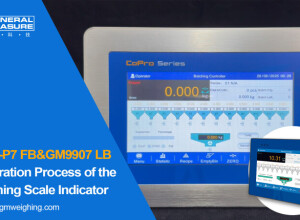[Article]: Static vs. Dynamic Weighing: Understanding the Key Differences
Weighing systems are essential in a wide range of industries—from manufacturing and logistics to agriculture and laboratories. Two primary weighing methods are commonly used: static weighing and dynamic weighing. Understanding the differences between these approaches is crucial when choosing the right weighing solution for your business.
What Is Static Weighing?
Static weighing refers to the process of weighing an object while it is completely at rest on the scale. The object must be placed on the weighing platform and remain still long enough for the scale to stabilize and display an accurate weight.
Common Applications of Static Weighing:
- Laboratories and scientific research
- Retail scales (e.g., weighing fruits or bulk products)
- Truck and axle weighing stations
- Calibration and quality control processes
Advantages of Static Weighing:
- High precision and accuracy
- Simpler equipment setup
- Lower initial investment
- Ideal for small batches or one-off weighing
Limitations of Static Weighing:
- Slower throughput due to manual handling
- Not suitable for fast production environments
What Is Dynamic Weighing?
Dynamic weighing involves measuring the weight of an object while it is in motion—usually on a conveyor belt. This method is also known as in-motion weighing or checkweighing.
Common Applications of Dynamic Weighing:
- Food and beverage production lines
- Pharmaceutical packaging
- Parcel sorting and logistics
- Automated manufacturing and assembly
Advantages of Dynamic Weighing:
- High-speed operation, suitable for continuous production
- Enables automatic rejection of underweight/overweight items
- Can integrate with data systems (ERP, MES)
- Improves production efficiency and consistency
Limitations of Dynamic Weighing:
- Generally less precise than static weighing
- Requires more complex and expensive equipment
- Sensitive to vibrations and environmental factors
Static vs. Dynamic Weighing: Key Differences
| Feature | Static Weighing | Dynamic Weighing |
|---|---|---|
| Object Position | Stationary | In motion |
| Speed | Slower | Fast, continuous |
| Accuracy | High | Moderate to high |
| Cost | Lower | Higher |
| Use Cases | Labs, calibration, retail | Production lines, logistics |
Which Weighing Method Should You Choose?
The choice between static and dynamic weighing depends on your specific application:
- Choose static weighing for maximum precision, smaller volumes, or manual workflows.
- Choose dynamic weighing when speed, automation, and real-time quality control are critical.
Conclusion
Both static and dynamic weighing methods play vital roles in modern industries. While static weighing offers unmatched precision, dynamic systems bring efficiency and automation to high-volume operations. Understanding their differences allows you to implement the most effective solution for your business goals.
Looking for a Weighing Equipment for Static or Dynamic Weighing?
At Weighing Review you will find articles and other contents about all type of scales and other weighing solutions such as technical articles, videos, case studies and guides. You can also search the Suppliers Directory and Marketplace to find the best supplier and product for your weighing needs.



























Interested? Submit your enquiry using the form below:
Only available for registered users. Sign In to your account or register here.